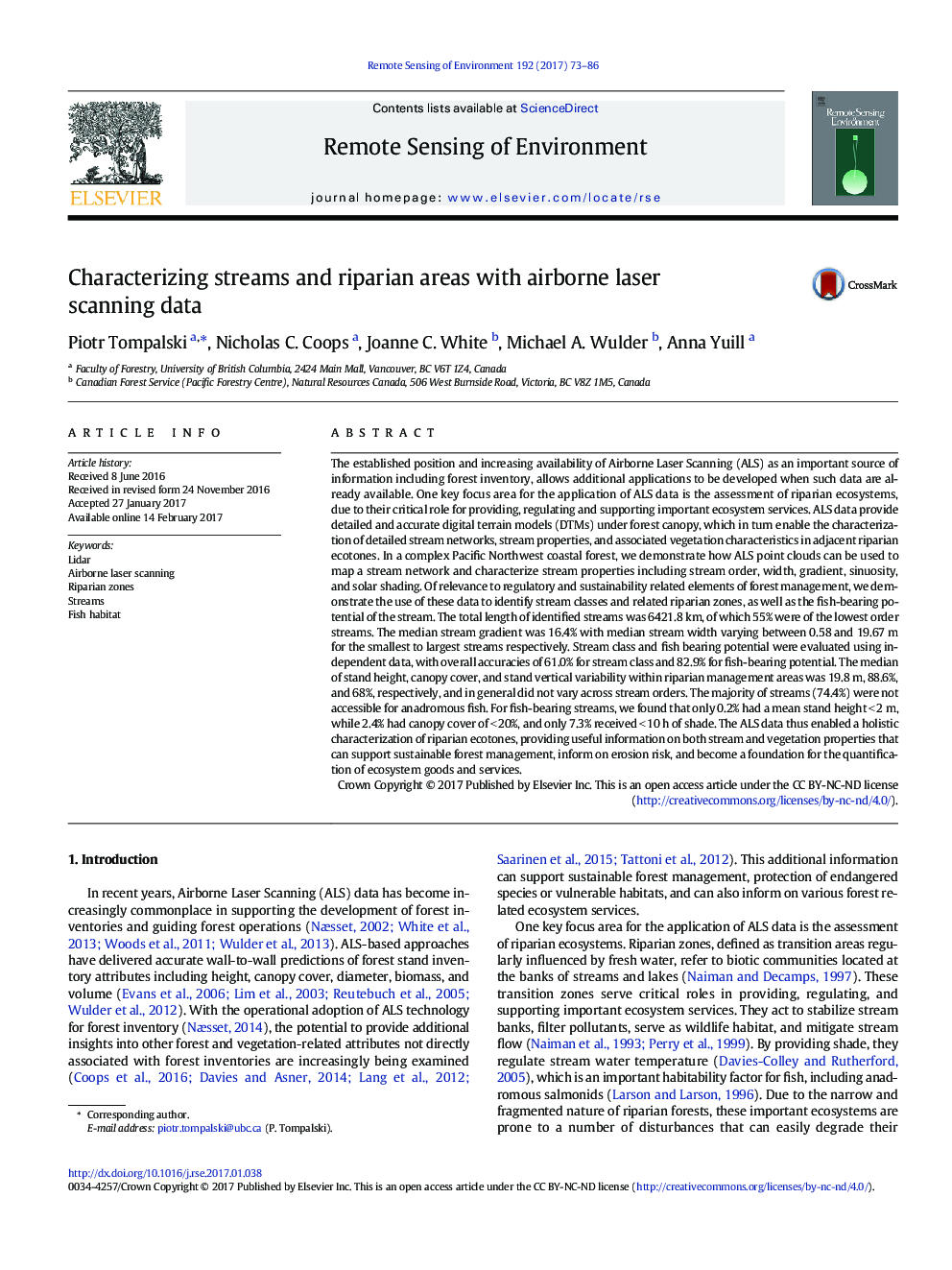| کد مقاله | کد نشریه | سال انتشار | مقاله انگلیسی | نسخه تمام متن |
|---|---|---|---|---|
| 5754871 | 1621208 | 2017 | 14 صفحه PDF | دانلود رایگان |
- ALS data was used to derive a holistic characterization of riparian ecotones.
- Forestry- and ecology-related aspects of riparian zones are characterized.
- 74% streams were not accessible for anadromous fish (classification accuracy = 82.9%).
- Stream class, which determines forest practices, was assigned with 61% accuracy.
- Outcomes are important for forest management and quantification of ecosystem services.
The established position and increasing availability of Airborne Laser Scanning (ALS) as an important source of information including forest inventory, allows additional applications to be developed when such data are already available. One key focus area for the application of ALS data is the assessment of riparian ecosystems, due to their critical role for providing, regulating and supporting important ecosystem services. ALS data provide detailed and accurate digital terrain models (DTMs) under forest canopy, which in turn enable the characterization of detailed stream networks, stream properties, and associated vegetation characteristics in adjacent riparian ecotones. In a complex Pacific Northwest coastal forest, we demonstrate how ALS point clouds can be used to map a stream network and characterize stream properties including stream order, width, gradient, sinuosity, and solar shading. Of relevance to regulatory and sustainability related elements of forest management, we demonstrate the use of these data to identify stream classes and related riparian zones, as well as the fish-bearing potential of the stream. The total length of identified streams was 6421.8Â km, of which 55% were of the lowest order streams. The median stream gradient was 16.4% with median stream width varying between 0.58 and 19.67Â m for the smallest to largest streams respectively. Stream class and fish bearing potential were evaluated using independent data, with overall accuracies of 61.0% for stream class and 82.9% for fish-bearing potential. The median of stand height, canopy cover, and stand vertical variability within riparian management areas was 19.8Â m, 88.6%, and 68%, respectively, and in general did not vary across stream orders. The majority of streams (74.4%) were not accessible for anadromous fish. For fish-bearing streams, we found that only 0.2% had a mean stand height <Â 2Â m, while 2.4% had canopy cover of <Â 20%, and only 7.3% received <Â 10Â h of shade. The ALS data thus enabled a holistic characterization of riparian ecotones, providing useful information on both stream and vegetation properties that can support sustainable forest management, inform on erosion risk, and become a foundation for the quantification of ecosystem goods and services.
Journal: Remote Sensing of Environment - Volume 192, April 2017, Pages 73-86
